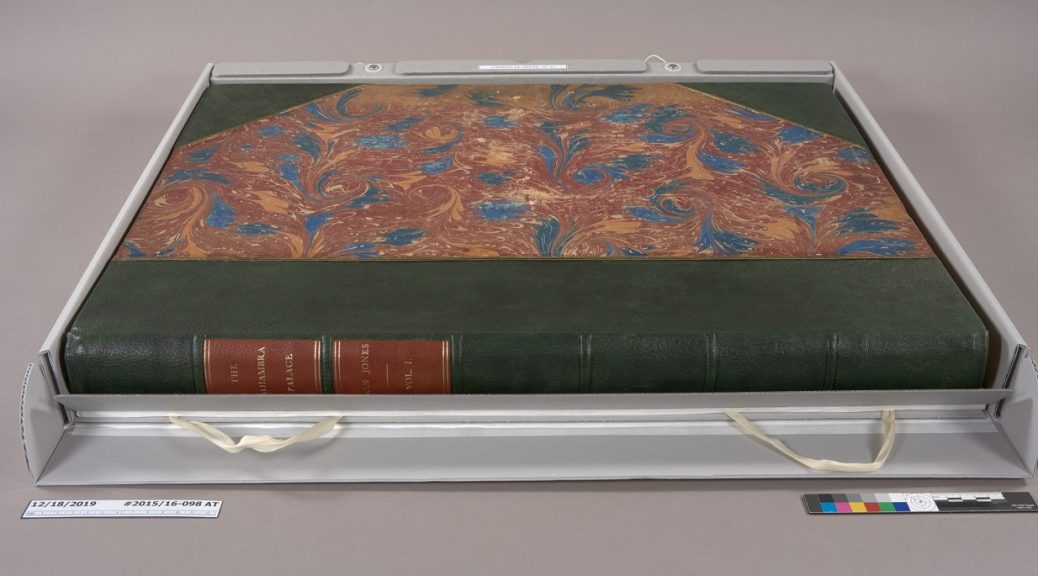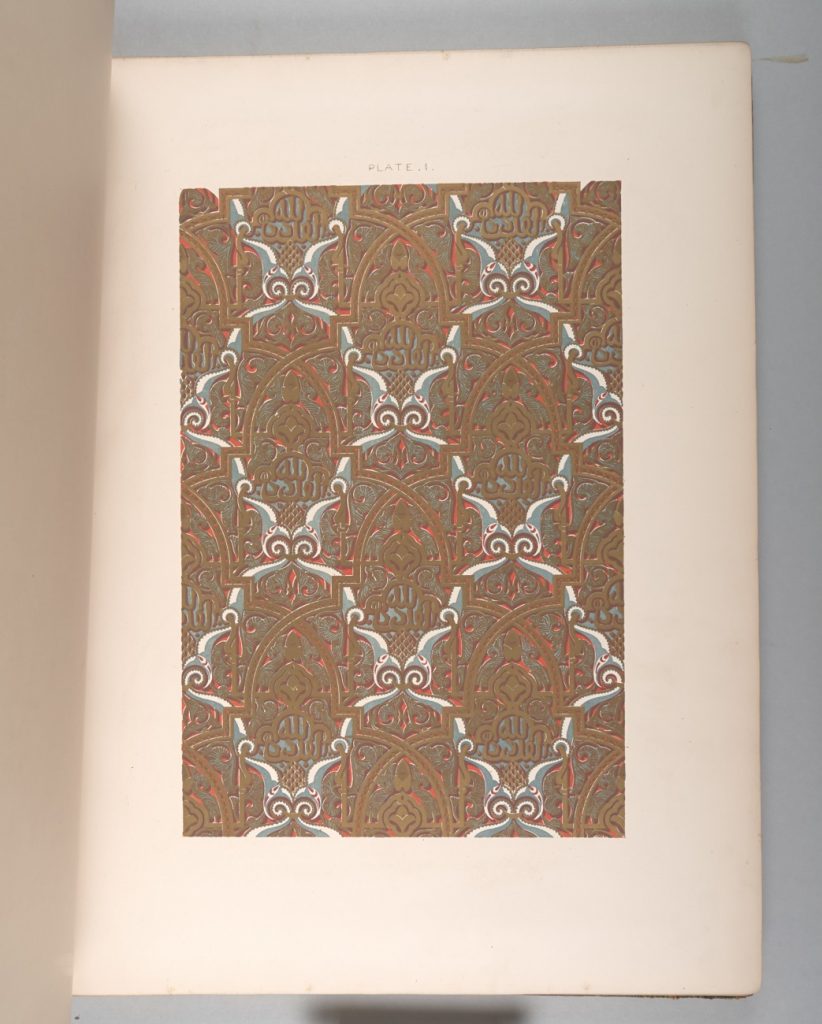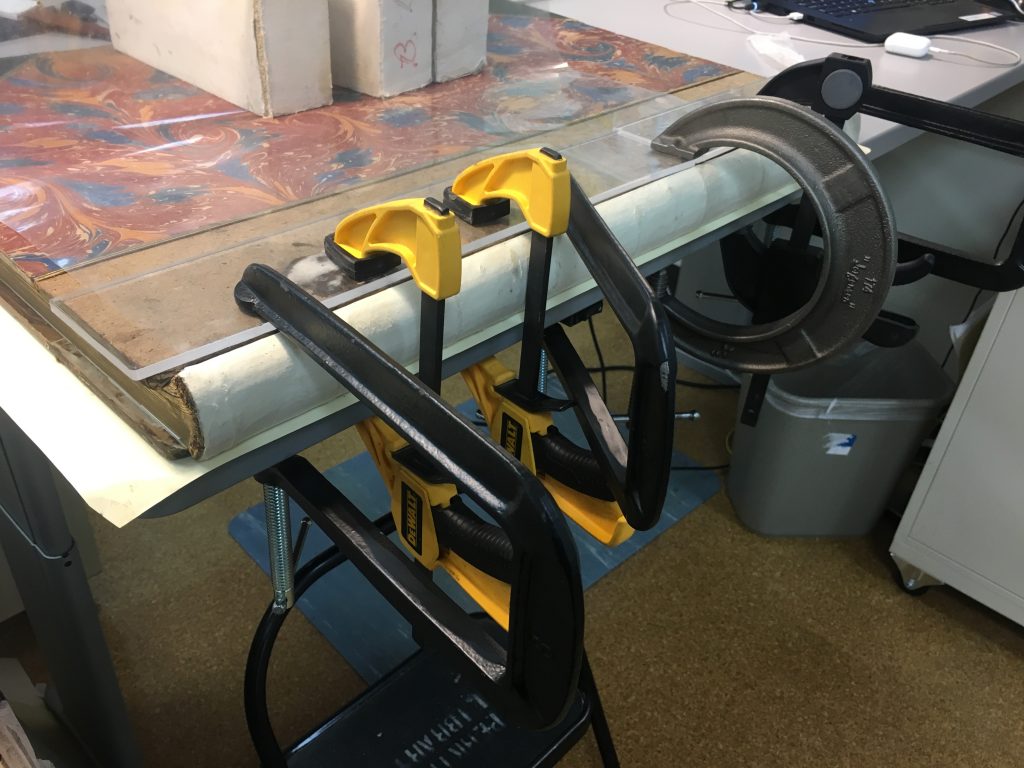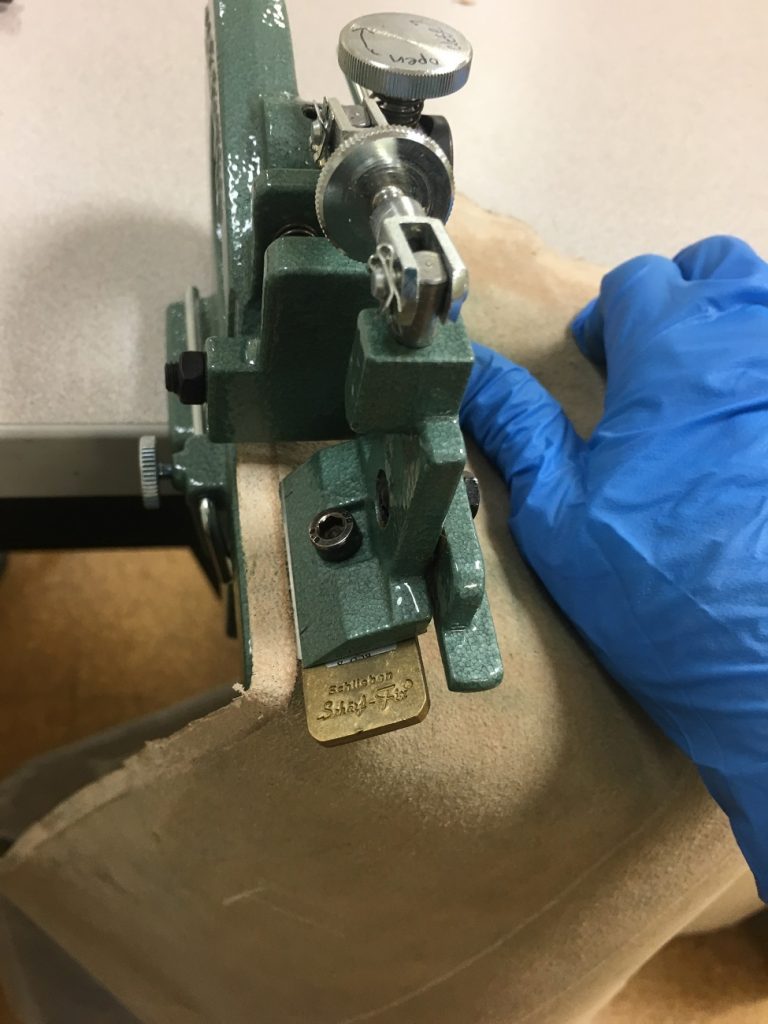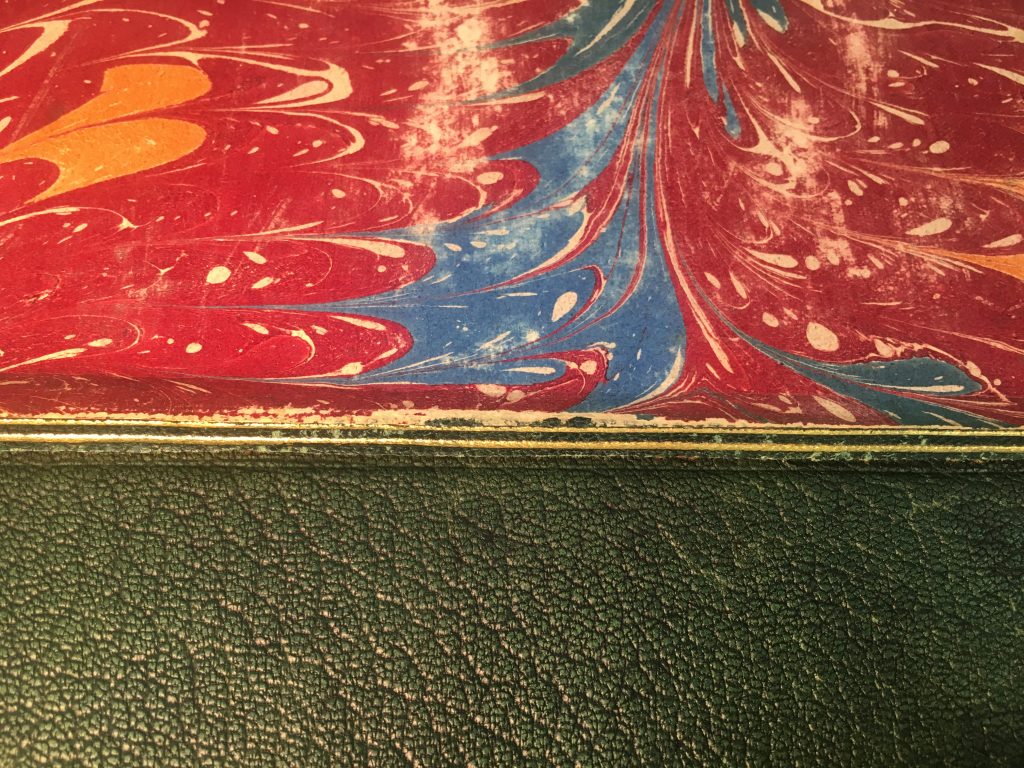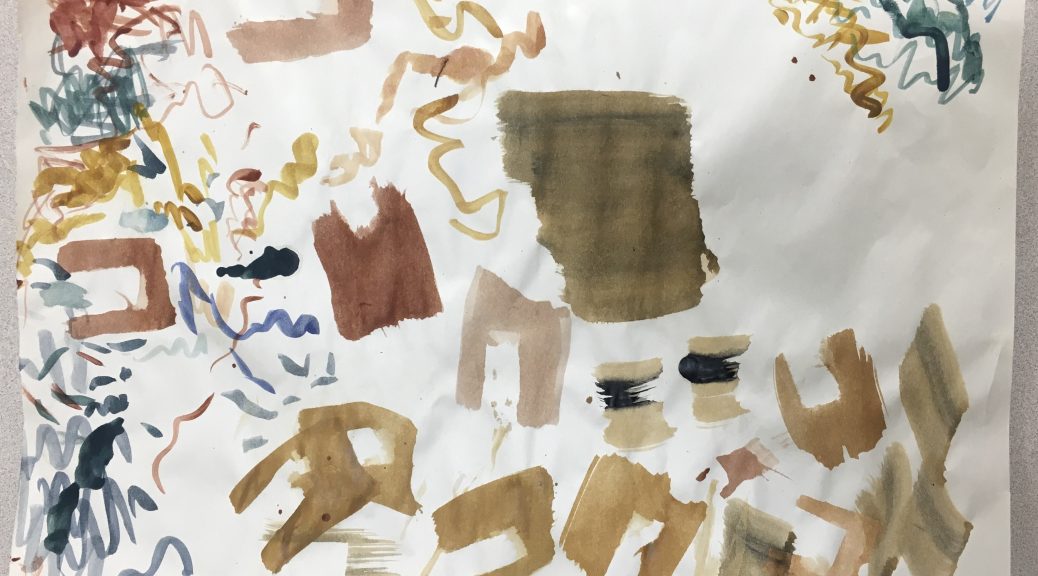by Erin Hammeke, Senior Conservator
I recently finished repair on these two double folio volumes, concluding a multi-year project. I performed dry cleaning and page repair, in- situ sewing repair, board reattachment, leather rebacking, and leather corner repair. Working on two volumes this size and weight (35lbs each) proved to be both an engineering challenge and a physically demanding project. I came up with some solutions for a few of the challenges presented while treating these very large volumes that I’ll share here.
This two volume set by the architect Owen Jones documents the decorative surfaces at the Alhambra Palace in Grenada. The texts are most well-known for their beautiful, large-scale color lithographic plates.
The volumes were bound in half-style bindings with green sheepskin covering and marbled paper sides and endleaves. The boards were detached and the sheepskin was in poor condition, with many tears and large losses. We decided to remove all of the leather up to the gold tooled areas. After attaching the boards with the use of many clamps (my favorite tools!), and prepping the spine with sufficient linings and sham bands, it was ready for covering.
I selected goatskins for the new leather and calculated that I would need three skins to cover both volumes’ spines and large corners. I dyed them to match the original – another challenge when working at this scale!
The sheepskin remnants were very thick, and did not take well to paring down and thinning. I was worried about having a smooth transition between the old and new leathers where they overlap. I realized I needed to pare the new leather to accommodate the old, but I didn’t want to lose the strength or dyed color of the hair side of the new goatskin. A piece from our Scharf-Fix that I’ve never used before provided the perfect solution. The kit comes with assorted roller sizes and we’ve only really ever used the full size (28mm) for edge paring.
Using one of the smaller rollers (13mm) along the meeting edges of the leather allowed me to take a step out of the flesh side that could accommodate the thick sheepskin remnants. I used the full-sized roller to clean up the stepped bevel by working it perpendicularly and off the edge.
During covering, I worked this bevel in with my bone folder creating a precise step for the original leather to sit into and making for a flush transition.
After adding new stamped leather spine labels, I created sleds that the heavy bindings can be moved on, hopefully protecting the covers from damage from being dragged across reading room table tops.
Have you discovered other uses for the variously sized Scharf-Fix rollers? What are your tips for repairing oversized and heavy bindings? We’d love to know!


